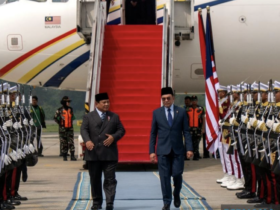SHAH ALAM, June 28 — Water levels in all seven dams in Selangor are above 95 per cent and are expected to last for another three to six months, said Selangor Infrastructure and Agriculture Committee chairman Datuk Izham Hashim.
He said despite the ongoing hot and dry weather due to the Southwest Monsoon, dam water levels are expected to remain stable in the coming months.
He said that the Southwest Monsoon, which began on May 10 and is expected to continue until September, typically brings low humidity and reduced rainfall in most areas.
“However, dam water levels can be replenished during the monsoon transition period in October, and the Northeast Monsoon from November to March, when high rainfall is expected in the catchment areas,” he said in a statement.
Izham added that Lembaga Urus Air Selangor (LUAS) has identified additional ponds and former mining sites near major rivers, which are suitable for upgrading with water supply infrastructure to boost raw water storage capacity.
“These ponds are branded under the Selangor Off-River Storage Scheme (SORSS), which involves over 100 ponds and several former mining sites,” he said.
Elaborating further, Izham said that the development of the SORSS will help optimise the use of alternative water sources, with its current supply capacity lasting up to three months.
“Overall, the readiness of the state’s water resources, including dam capacity and SORSS development, is estimated to last up to nine months, to withstand the Southwest Monsoon,” he said.
Izham added that LUAS is also maximising the use of groundwater as an alternative to treated water, particularly for the industrial sector, through licensing and water abstraction charges. Three groundwater wells have been built in Hulu Selangor for use, especially during the dry season.
In terms of water quality, Izham said that the Zero Discharge Policy (ZDP), implemented through the Licensing Regulations for the Discharge of Return Water and the Entry or Release of Waste Materials and Pollutants 2024, is actively being enforced and helps minimise pollution of water resources.
“To date, there have been no recorded disruptions to the state’s water treatment plant (LRA) operations, caused by industrial pollution of water resources,” he said.




















Leave a Reply